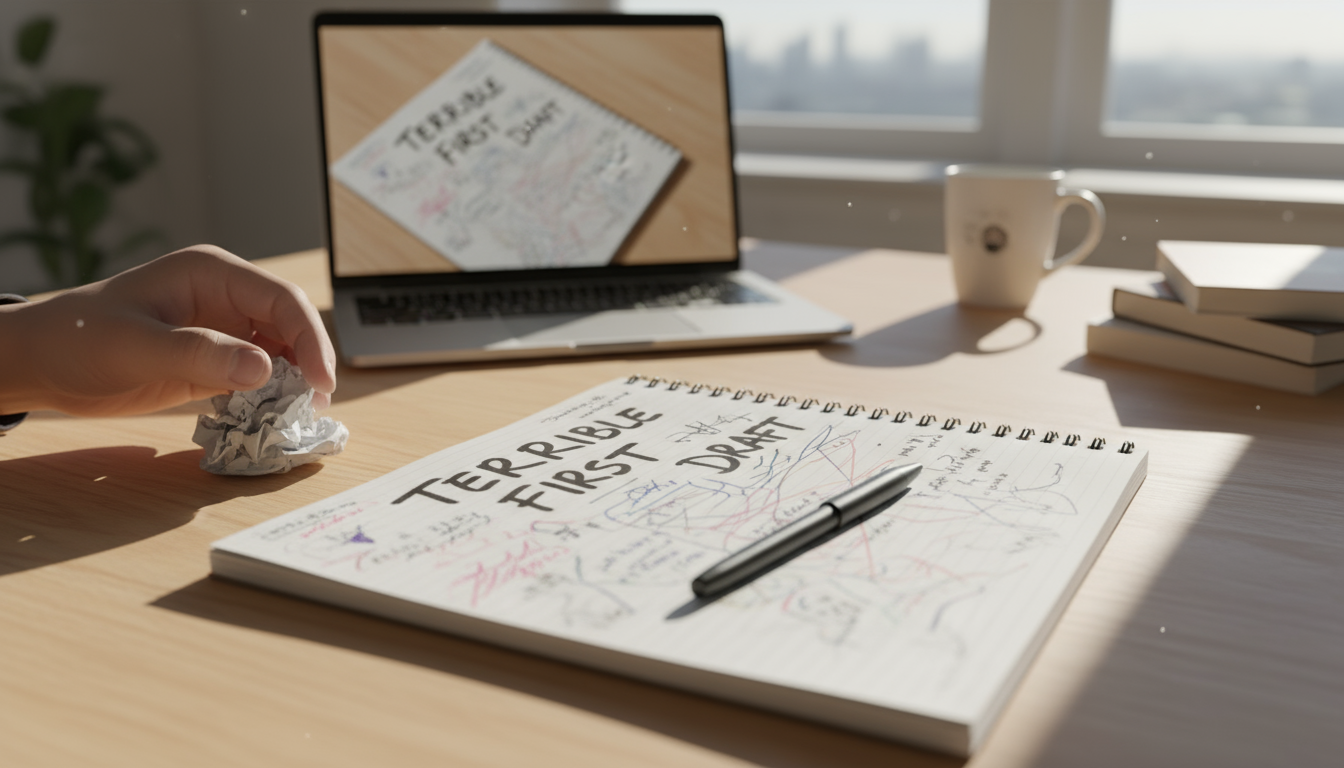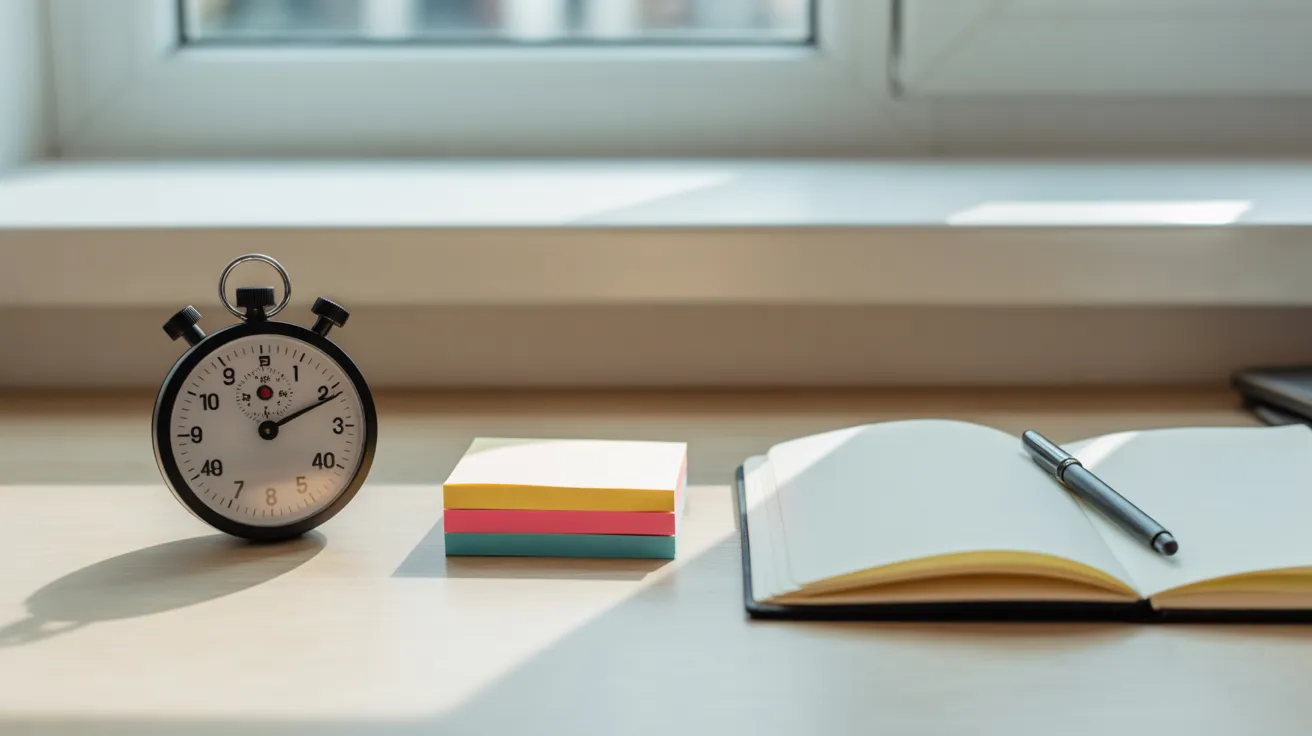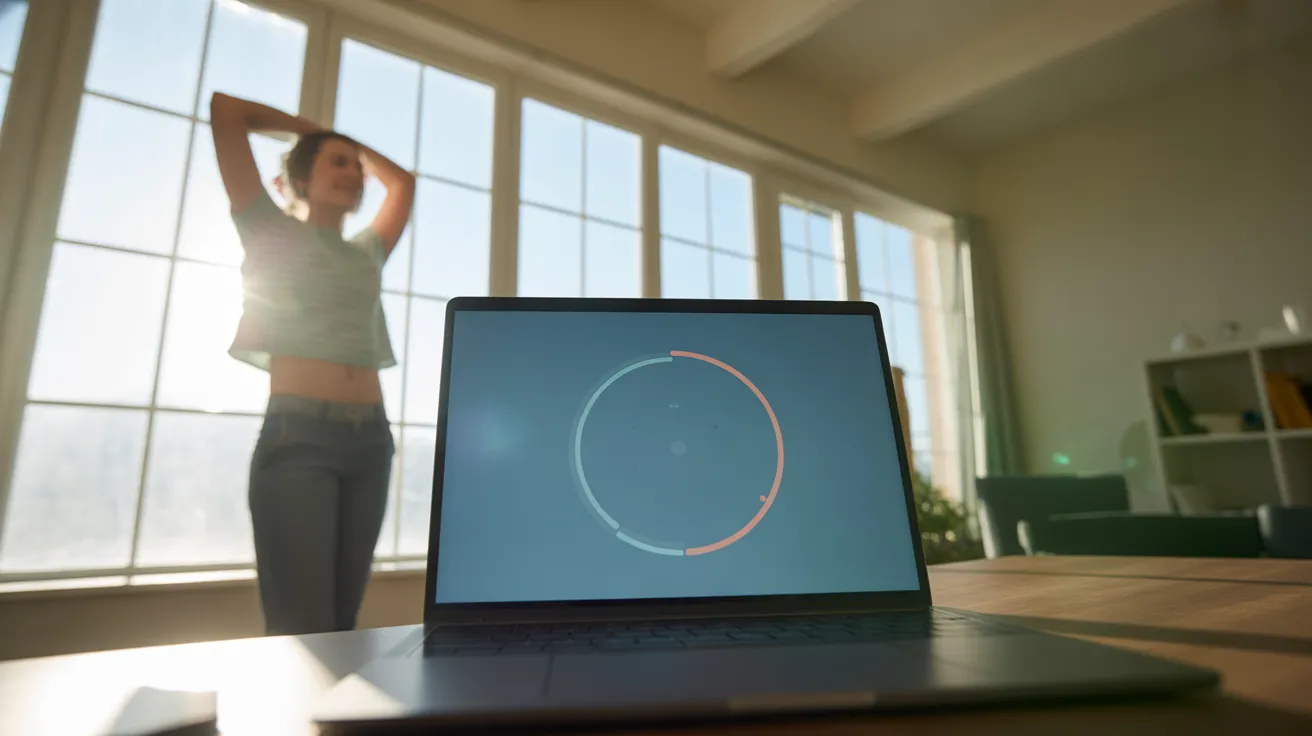
Do you ever stare at your to-do list and feel a wave of exhaustion before you even start? That big, important project looms over you, feeling less like an opportunity and more like a mountain you have to climb barefoot. The feeling is a heavy, invisible friction. It’s the mental resistance that makes starting the hardest part.
You know you need to do the work. You want to do the work. But the gap between knowing and doing feels vast. This isn’t a sign of laziness or a lack of discipline. It’s a sign that your brain is trying to protect you from perceived difficulty and overwhelm. It’s a signal that your current approach to work isn’t working with your brain’s natural rhythms, but against them.
Many of us search for complex productivity systems or the latest app, believing the solution must be as complicated as the problem feels. But what if the answer isn’t a new system, but a new mindset? What if the most powerful productivity hack is a simple mental shift?
The secret is not about forcing yourself to do hard things. It’s about making hard things feel easier to start. It’s about lowering the barrier to entry so that your natural motivation can take over. The simple mind trick is this: You build a reliable bridge between intention and action using simple, repeatable rituals.
This isn’t just a feel-good idea. It’s a practical approach grounded in how our attention actually works. In this guide, we’ll explore why your focus flickers and your energy drains. More importantly, we’ll give you a set of simple, powerful focus rituals you can use to reclaim your attention, reduce that feeling of overwhelm, and finally make progress on the things that matter. You don’t need more willpower. You need a better process. Let’s build one together.
📚 Table of Contents
- Understanding Your Attention: Why Focus Is So Hard
- The Four Essential Focus Rituals
- 1. The Startup Ritual: Priming Your Brain for the Day
- 2. The Deep Work Entry Ritual: Crossing the Threshold into Focus
- 3. Break Hygiene: The Art of Strategic Rest
- 4. The Shutdown Ritual: Closing the Loop on Your Day
- Your 15-Minute Starter Pack
- Mental Tools to Support Your New Rituals
- 1. Reframe Perfectionism as an Entry Barrier
- 2. Actively Reduce Friction
- 3. Script Your Reset After Derailment
- Putting It Into Practice: Worked Examples
- Frequently Asked Questions (FAQ)
- 1. What about music or white noise? Does it help or hurt focus?
- 2. I’ve been told I’m a great multitasker. Is it really that bad?
- 3. What do I do when my motivation completely disappears, even with rituals?
- 4. My brain is completely fried by the evening. How can I work on personal projects?
- 5. How long does it take for these rituals to become automatic habits?
- Your Seven-Day Focus Challenge

Understanding Your Attention: Why Focus Is So Hard
Before we can build effective habits, we need to understand the landscape of our own minds. Why does focus feel so fragile? Why do some days feel incredibly productive while others are a slog? It comes down to two key concepts: distraction patterns and energy rhythms.
Think of your ability to focus as a muscle. It can be trained, but it can also be fatigued. Every interruption, every notification, every time you switch tasks, you’re forcing that muscle to do a little extra work. Over the course of a day, that adds up to serious exhaustion.

The High Cost of Switching Gears
Our modern world celebrates multitasking. We check email while on a video call. We scroll social media while drafting a report. We think we’re being efficient, but the opposite is true. Our brains aren’t built to do two cognitively demanding things at once. What we call multitasking is actually rapid context switching.
Context switching is the mental process of shifting your attention from one unrelated task to another. Imagine you’re writing a detailed proposal. Your mind is holding all the relevant facts, figures, and arguments. Then, a notification pops up. It’s an urgent email from a colleague about a completely different project. To answer it, you have to mentally “unload” all the proposal information and “load” the context for the email. After you send your reply, you have to reload the proposal context all over again. This process is not seamless. It’s messy, and it comes with a cognitive cost.
This constant loading and unloading creates what psychologists call a high cognitive load. Think of cognitive load as your brain’s working memory, like the RAM in a computer. When you have too many “apps” open at once, everything slows down. You make more mistakes. You feel more stressed. You drain your mental energy much faster than if you had focused on one thing at a time. This is why a day filled with interruptions can leave you more exhausted than a day spent in deep, focused work, even if you feel like you accomplished less.
The antidote to this is monotasking, also known as single-tasking. It’s the simple, powerful practice of dedicating your full attention to one single task for a set period. It respects your brain’s limitations and allows you to work more deeply and efficiently. It’s the foundation of a truly productive mindset.

Riding Your Natural Energy Waves
Your ability to focus isn’t constant throughout the day. It ebbs and flows in natural cycles known as ultradian rhythms. Just like we have a 24-hour circadian rhythm for sleep, we also have shorter, 90-to-120-minute rhythms of high-frequency brain activity followed by periods of lower-frequency activity. During the peaks, you’re primed for intense focus and creative problem-solving. During the troughs, your brain needs a break to rest and consolidate information.
If you try to power through these natural dips, you’re fighting a losing battle. You’ll feel groggy, distracted, and unmotivated. The work you produce will be of lower quality, and you’ll burn yourself out. A key part of how to make hard tasks easy is to align your work with these rhythms, not against them. This means working in focused sprints of 60 to 90 minutes, followed by a genuine, restorative break of 15 to 20 minutes.
By understanding these two principles—the high cost of context switching and the natural rhythm of your energy—you can see why unstructured workdays often lead to burnout and overwhelm. The mind trick we’re building is a system of rituals designed to honor these realities. These rituals help you embrace monotasking, respect your energy cycles, and create a predictable structure that makes deep work feel less like a chore and more like a natural state.
When you achieve this, you open the door to flow. Flow, a concept popularized by psychologist Mihaly Csikszentmihalyi, is that magical state of deep immersion where you’re so absorbed in a task that your sense of time melts away. You’re not forcing focus; you’re enveloped by it. This is the ultimate goal, and it’s far more accessible than you think.

The Four Essential Focus Rituals
A ritual is more than a routine. A routine is something you do. A ritual is something you inhabit. It’s a series of intentional actions that signal to your brain what’s coming next. By creating rituals around your work, you reduce decision fatigue and lower the mental barrier to getting started. You’re not relying on motivation; you’re relying on a proven process.
Here are the four core rituals to create a framework for sustained focus. You can start small, with just one or two, and build from there.

1. The Startup Ritual: Priming Your Brain for the Day
How you start your day sets the tone for everything that follows. A startup ritual is a brief, consistent sequence of actions you perform at the beginning of your workday to transition from “home mode” to “focus mode.” It’s about creating a clear boundary.
Why it works: It automates the decision of “what should I work on first?” which is often a major source of procrastination. It calms the reactive part of your brain that wants to immediately dive into emails and notifications, allowing your proactive, planning brain to take the lead.
How to build it: Your ritual should be short, around 5-10 minutes. It could include actions like:
- Tidying your desk for a fresh start.
- Pouring a glass of water or a cup of tea.
- Reviewing your goals for the week.
- Identifying your 1-3 most important tasks for the day.
- Taking three deep, calming breaths before you open your computer.
The specific actions don’t matter as much as the consistency. The goal is to create a predictable sequence that tells your brain, “Okay, it’s time to focus now.”

2. The Deep Work Entry Ritual: Crossing the Threshold into Focus
Starting a hard task is often the hardest part. The deep work entry ritual is a micro-ritual, just 2-3 minutes long, that you perform immediately before beginning a demanding task. It’s like a diver’s final check before plunging into the water.
Why it works: It acts as a buffer against distractions. It gives your brain a clear, simple on-ramp to a complex task, reducing the initial feeling of overwhelm. This is a powerful mind trick for productivity because it makes the act of starting feel almost effortless.
How to build it: Choose a few simple, sequential actions. For example:
- Put your phone on silent and move it out of arm’s reach.
- Close all unnecessary browser tabs and applications.
- Set a timer for your intended work session (e.g., 60 minutes).
- Open only the specific document or tool you need for the task.
- State your specific intention out loud: “For the next 60 minutes, I am going to draft the introduction for the Q3 report.”
This ritual is your launch sequence. It clears the runway and signals that for the duration of that timer, this one task is your entire world.

3. Break Hygiene: The Art of Strategic Rest
What you do on your breaks is just as important as what you do during your work sprints. Poor break hygiene—like scrolling through social media or checking work email—doesn’t allow your brain to actually rest. You’re just trading one form of cognitive load for another.
Why it works: True breaks allow your brain to recharge its attentional capacity. According to research referenced by organizations like the American Psychological Association, stepping away from a problem can also activate your brain’s “diffuse mode,” allowing for creative insights and connections you wouldn’t make while staring at the screen. Strategic rest prevents burnout and improves the quality of your focus when you return.
How to build it: Your breaks should be intentional and screen-free. For a 15-20 minute break, try:
- Stretching or walking around.
- Stepping outside for fresh air and sunlight.
- Listening to a piece of music (without doing anything else).
- Doing a simple chore like loading the dishwasher.
- Simply sitting with your eyes closed and focusing on your breath.
The key is to do something that is low-effort and engages your mind and body in a different way than your work does. This is how you honor your natural energy rhythms.

4. The Shutdown Ritual: Closing the Loop on Your Day
Just as you need a ritual to start your day, you need one to end it. A shutdown ritual provides a clear, definitive end to your workday, allowing your brain to fully disconnect and recover. Without it, work tends to bleed into your personal time, creating a persistent, low-level stress.
Why it works: It addresses the Zeigarnik effect, a psychological phenomenon where our brains tend to remember uncompleted tasks better than completed ones. By planning for tomorrow, you’re “closing the loop” on these tasks, telling your brain it’s okay to let them go for now. This reduces evening anxiety and helps you be more present in your personal life.
How to build it: This 5-10 minute ritual happens at the very end of your workday. It could include:
- Reviewing what you accomplished today.
- Tidying your workspace.
- Identifying your top priority for tomorrow.
- Closing all work-related tabs and applications on your computer.
- Saying a specific phrase, like “Shutdown complete,” to signal the end of the day.
This ritual is a powerful gift to your future self, ensuring you start the next day with clarity instead of chaos.

Your 15-Minute Starter Pack
Feeling overwhelmed by all this? Don’t be. Here is a simple, 15-minute starter pack you can implement tomorrow.
Morning (5 mins): Before opening your email, take a piece of paper. Write down the one thing that, if you get it done today, will make the day a success. Just one. Then, write down the very first physical action you need to take to start it.
Before That Task (2 mins): Put your phone out of sight. Set a timer for just 25 minutes (the Pomodoro Technique). Close everything else on your computer. For 25 minutes, you will only work on that one thing.
After That Task (8 mins): When the timer goes off, get up. Walk away from your desk for 8 minutes. Get water, stretch, look out a window. Do not check your phone.
That’s it. Just 15 minutes of structured intention. Try this for a week. The feeling of control and accomplishment you’ll get from just one focused 25-minute session can be the spark that ignites a whole new productivity mindset.

Mental Tools to Support Your New Rituals
Rituals provide the structure, but a supportive mindset is the fuel that makes them run. Hard tasks often feel hard not just because of the work itself, but because of the mental baggage we attach to them. Here are three thought tools to lighten that load and make your rituals even more effective.

1. Reframe Perfectionism as an Entry Barrier
Perfectionism is often the single biggest reason we procrastinate on important tasks. We build the task up in our minds to be this monumental effort that must be executed flawlessly from the start. The pressure is immense, so we avoid starting altogether.
The Thought Tool: Give yourself permission to produce a “terrible first draft.” Seriously. The goal is not to do it well; the goal is simply to start. Lower the bar so low that you can’t help but step over it. Tell yourself, “I’m just going to write 100 messy, disorganized words,” or “I’m just going to sketch out the three ugliest slides for this presentation.”
Why it works: This reframe short-circuits the anxiety-procrastination loop. Once you have something—anything—down on the page, the task is no longer a scary, abstract idea. It’s a tangible thing that you can now edit, refine, and improve. The hardest part is going from zero to one. This tool is designed to make that leap as small as possible. You’ll often find that once you start, momentum takes over and you do more than you initially planned.

2. Actively Reduce Friction
Every task has a certain amount of friction associated with it—the small, annoying steps you have to take before you can even begin the real work. Finding the right file, remembering your password, gathering your materials. Each piece of friction is a tiny excuse for your brain to say, “Maybe I’ll just do this later.”
The Thought Tool: Adopt a “Mise en Place” mindset. This is a French culinary term that means “everything in its place.” Chefs gather and prepare all their ingredients before they start cooking. Apply this to your work. Ask yourself: “What is the smallest thing I can do right now to make starting this task 10% easier later?”
How to apply it:
- For writing a report: Create the document, give it a title, and write the main headings before you stop work for the day.
- For a design project: Open the software and gather the brand assets into a single folder.
- For doing your taxes: Create a dedicated folder and put every relevant digital receipt into it as soon as you get it.
Why it works: This is a core productivity hack that shifts effort. You use moments of low energy (like the end of the day) to do the simple prep work, which dramatically reduces the activation energy needed to start the high-energy, deep work later. Your future self will thank you.

3. Script Your Reset After Derailment
No matter how good your system is, you will have bad days. You will get distracted. You will fall off track. This is not a failure; it is a certainty. The difference between a productive person and an unproductive one is not that they never get derailed—it’s how quickly they get back on the rails.
The Thought Tool: Create a simple, pre-scripted “Reset Ritual.” When you realize you’ve spent the last 30 minutes mindlessly scrolling or you feel completely overwhelmed, you don’t have to think about what to do next. You just execute your script.
How to create your script: It should be simple and non-judgmental. For example:
- Acknowledge without judgment: “Okay, I got distracted. It happens.”
- Perform a physical action: “I will stand up, stretch, and get a glass of water.”
- Re-center your intention: “What is the single most important thing I can do in the next 15 minutes?”
- Take one tiny step: “I will close my browser and open the document.”
Why it works: Self-criticism is a motivation killer. It spirals you further into avoidance. This script replaces shame with a simple, forward-looking action plan. It removes the need to make a decision when you’re already feeling depleted and provides a clear, compassionate path back to focus. It’s a powerful mind trick for building resilience in your productivity mindset.

Putting It Into Practice: Worked Examples
Theory is one thing, but how do these rituals and thought tools work in the real world? Let’s walk through two common, challenging scenarios to see how you can apply these strategies to make hard tasks feel easier.

Scenario 1: The Tight Deadline Project
The Situation: You have a major report due in three days. It requires deep concentration, but the pressure is making you anxious, and you find yourself procrastinating by doing small, unimportant tasks instead.
The Old Approach: You sit down at your computer, open the blank document, and immediately feel a surge of overwhelm. You check your email to feel a small sense of accomplishment. An hour later, you’ve answered a dozen emails but have written zero words for the report. Panic starts to set in.
The Focused Method Approach:
- The Startup Ritual: You start your day not by looking at the report, but by taking 5 minutes to review the project outline. You identify the three main sections you need to work on. You decide your only goal for the morning is to complete a rough draft of the easiest section.
- Reduce Friction: You create a separate document for your research notes and pull up the three key sources you’ll need. You’ve now prepared your “Mise en Place.”
- The Deep Work Entry Ritual: You put your phone in another room. You close your email and all other tabs. You set a timer for 75 minutes. You say out loud, “For the next 75 minutes, I am only working on the ‘Background’ section of this report.”
- Reframe Perfectionism: You tell yourself, “This is just a brain dump. It doesn’t need to be good, it just needs to be done.” You give yourself permission to write in bullet points and use placeholder text like “[insert statistic here].”
- Break Hygiene: When the timer goes off, you don’t just switch to another task. You get up, walk outside for 15 minutes, and leave your phone behind. You let your mind wander. When you return, you’re ready for another focused sprint.
The Result: By the end of the day, you have a complete, albeit messy, draft of the entire report. It’s not perfect, but it exists. The mountain has become a manageable hill. The next two days can be focused on refining and polishing, which is a much less intimidating task than starting from a blank page.

Scenario 2: The Noisy Home Environment
The Situation: You work from home, and your environment is filled with unpredictable distractions—family members, pets, deliveries. You find it impossible to get into a state of flow because you’re constantly being interrupted.
The Old Approach: You try to “power through” the noise, getting increasingly frustrated with every interruption. You feel your focus shatter, and your temper frays. You end the day feeling exhausted and unproductive, blaming your environment.
The Focused Method Approach:
- The Startup Ritual: You have a brief conversation with your family. “Between 10:00 and 11:30, I’m going to be in a deep focus session. Please only interrupt me if it’s a true emergency.” You’ve set a clear boundary.
- The Deep Work Entry Ritual: You put on noise-canceling headphones. You put a sign on your door. You open your task document. You set your timer for 90 minutes. This signals to yourself and others that this is protected time.
- Script Your Reset: An unexpected delivery arrives, and you have to answer the door. The interruption breaks your flow. Instead of getting frustrated, you run your reset script. You tell yourself, “Okay, that was an interruption. It happens.” You take a moment to stretch, take a sip of water, and look at your to-do list to remember your single priority. You reset your timer for the remaining time and dive back in.
- Shift Your Mindset: You accept that your environment isn’t perfect. Instead of aiming for three hours of uninterrupted flow, you aim for two or three high-quality 60-90 minute focus blocks throughout the day. You work with the reality of your situation, not against it.
The Result: You still get interrupted, but the interruptions no longer derail your entire day. You have a tool to recover your focus quickly. You feel more in control and less resentful of your environment. You accomplish your most important work in the protected blocks you’ve created, making real, tangible progress.

Frequently Asked Questions (FAQ)
It’s natural to have questions as you begin to reshape your relationship with focus. Here are answers to some of the most common ones we hear from our community.
1. What about music or white noise? Does it help or hurt focus?
This is a very personal question, as the answer depends on you and the task. For some people, complete silence is ideal. For others, the subtle hum of a coffee shop or a white noise generator can help mask distracting background sounds. The science, supported by institutions like the National Institutes of Health, suggests that music’s effect is complex. Familiar instrumental music or ambient soundscapes often work best, as music with lyrics can compete for your brain’s language processing resources. The key is to experiment. Try working in silence, with white noise, and with instrumental music. Be honest about the results. If you find yourself singing along or getting distracted by the melody, it’s not the right tool for deep work.
2. I’ve been told I’m a great multitasker. Is it really that bad?
The myth of the “good multitasker” is persistent. While some people are better at switching between tasks quickly, the neurological cost remains. No one can give their full, undivided attention to two complex tasks simultaneously. What feels like successful multitasking is often just you doing multiple things at a lower level of quality and with a higher cognitive load. This might be fine for folding laundry while talking on the phone, but it’s detrimental for tasks that require deep thought, creativity, or precision. Embracing monotasking for your most important work isn’t about slowing down; it’s about creating the conditions for higher-quality output and less mental fatigue.
3. What do I do when my motivation completely disappears, even with rituals?
Motivation is a fickle feeling; it comes and goes. That’s precisely why we rely on rituals and systems. On days when you feel zero motivation, the goal is not to force it. The goal is to lean on your process. Use the “terrible first draft” mind tool. Drastically shorten your work sprint. Instead of 90 minutes, set a timer for just 15. Tell yourself, “Anyone can do anything for 15 minutes.” The act of starting, even in a small, imperfect way, often generates its own momentum. The ritual gets you started, and action can often create motivation, rather than the other way around.
4. My brain is completely fried by the evening. How can I work on personal projects?
This is a classic case of decision fatigue and depleted cognitive resources. Don’t try to fight it head-on. First, ensure your shutdown ritual is solid. You need to create a clear separation from your day job to even have a chance at evening focus. Second, apply the same principles but on a smaller scale. Your personal project time might start with a mini-ritual—changing clothes, having a snack, moving to a different room. And most importantly, have a very small, specific goal. Not “work on my novel,” but “write 150 words.” Not “learn to code,” but “complete one 10-minute tutorial.” Lower the friction and the expectation to match your lower energy levels.
5. How long does it take for these rituals to become automatic habits?
Habit formation varies for everyone. The old idea of “21 days” is a myth. Research suggests it can take anywhere from a few weeks to several months for a new behavior to become truly automatic. The key is consistency, not perfection. Don’t worry about the timeline. Focus on the process. Each time you complete your startup ritual or take a proper break, you are casting a vote for the person you want to become. If you miss a day, don’t spiral. Just show up and perform the ritual the next day. The goal is progress, not a perfect record.

Your Seven-Day Focus Challenge
Reading about these ideas is one thing. Experiencing them is another. The only way to see if this productivity mindset works for you is to try it. I invite you to take a simple, seven-day challenge. Don’t try to implement everything at once. That leads to overwhelm. Instead, pick a few small actions and commit to them for one week.
This isn’t about revolutionizing your life overnight. It’s about taking small, intentional steps that prove to yourself that you have more control over your attention than you think. It’s about making hard tasks feel just a little bit easier, one day at a time.
Here are 3-5 focus actions to try for the next seven days:
- Define Your “One Thing.” Each morning this week, before you check any notifications, take two minutes to identify the single most important task for your day. Write it down on a sticky note and place it on your monitor. This is your compass for the day.
- Practice Single-Tasking for 25 Minutes. Just once per day, choose a task (ideally your “one thing”) and set a timer for 25 minutes. During that time, close all other tabs and put your phone out of sight. Give that one task your complete, undivided attention. When the timer goes off, you’re done. You can go back to your normal way of working. Just experience 25 minutes of pure focus.
- Implement a “Shutdown Complete” Ritual. At the end of each workday, take five minutes. Tidy your desk. Write down your main task for tomorrow. Then, close your computer and say out loud, “Shutdown complete.” Feel the sense of closure this brings.
That’s it. Three small changes. These actions are designed to lower the friction to focus, give you a taste of deep work, and help you disconnect more effectively. After seven days, reflect on how you felt. Did you feel more in control? Less overwhelmed? Did that hard task feel a little easier to start?
The journey to sustained focus is a practice, not a destination. Be kind to yourself. Be patient. And start small. You have everything you need to begin.
Disclaimer: The information provided in this article is for educational and informational purposes only and is not intended as medical or psychological advice. It is not a substitute for professional advice from a qualified healthcare provider. Always seek the advice of your physician or other qualified health professional with any questions you may have regarding a medical condition or mental health concern.






